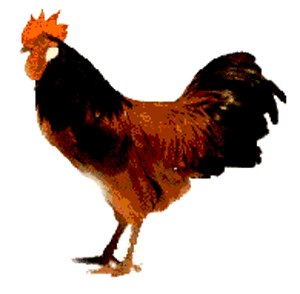
Vorwerk Breed Overview
Developed in Germany in 1900 by Oskar Vorwerk, he crossed a Lakenvelder, Buff Sussex, Buff Orpington and Blue Andalusian. His aim was simple he wanted to create a large bodied bird that was dual purpose, with a Lakenvelder pattern but also the Buff base color.
However the story of how the Bantam Vorwerk, was developed in America is different. A poultry breeder/fancier from Minnesota with the name Wilmar Vorwerk decided he wanted some of the birds that shard the same name as himself. He couldn’t find any in America however, so he decided to breed his own – but in bantam size!
To develop a bird similar looking to the Vorwerk he crossed Lakenvelder bantams, Buff and Blue Wyandotte bantams, Black tailed buff rosecomb bantams, buff Columbian rose comb bantams. Did it work? Well yes, infact he developed something very similar looking to the large Vorweck, it was accepted into the ABA bantam and standardized in 1985.
Bantams are therefore fairly recent imports and many are having fertility problems at the moment possibly due to a small gene pool.
They were imported into Britain about twenty years ago when Mrs Wallis of Arundel wanted to form a club for the breed . They are alert and active but not timid. They make an ideal utility and backyarders bird as they lay well and spare males weigh out at around 4lb.
Breeders Tips:
- This is a medium size attractive bird that thrives quite happily on smaller rations than many other breeds of the same size.
- A very good dual purpose bantam with great for barnyard or backyard flocks.
Appearance
Vorweck bantams are an alert and active bird with an upright carriage and full tail.
Bantam males weight 27oz (765g) the female bantams weight 23oz (650g)
The comb should be of medium size and bright red, with 5 points all upright. The rear points in the females may infact droop slightly.
The wattles with the females are small but bright red. In the males the wattle are broad and of medium length.
Earlobes in both the male and female are white in color and have a fairly distinctive almond shape. This feature on the bird makes it very easily recognizable.
The beak is blue/gray color. The eyes are orangery red with a yellow iris. Head and hackles are a deep dark black and the tail is dark black too but more of a velvet. Wings are a buff highlight with again black. The front of the body are buff colors sometimes golden.
Purpose
Dual
Classification
Light / Rare
Origin
Germany (Large)
USA (Bantam)
Egg Color
Cream to tinted
Egg Numbers
170 per annum (from the large sized bird)
